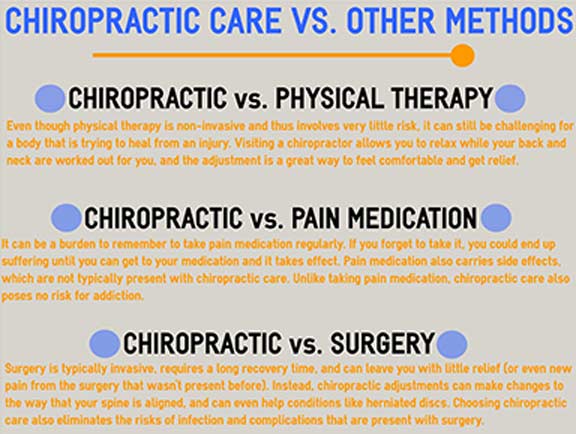Examine The Physical Elements That Are Driving Brand-New Methods To Decrease Back Pain
Examine The Physical Elements That Are Driving Brand-New Methods To Decrease Back Pain
Blog Article
Uploaded By-Holm Kramer
As you think about the future landscape of pain in the back treatment, visualize a world where technology effortlessly intertwines with typical therapies to supply novel services. Envision a globe where virtual reality not just delights yet likewise heals, where robotic precision redefines minimally intrusive procedures, and where biofeedback empowers people in their discomfort monitoring journey. The advancements in neck and back pain therapies are not simply theoretical circumstances yet substantial truths forming the means we approach and relieve this prevalent problem.
Virtual Reality Treatment for Neck And Back Pain
Are you tired of standard therapies for your neck and back pain? Virtual Reality Therapy provides a novel strategy to handling your discomfort. By involving yourself in an online setting, you can sidetrack your mind from the discomfort signals being sent out to your brain, providing alleviation in an unique and ingenious way.
Utilizing customized VR headsets, you can engage in numerous activities and simulations made to target certain locations of your back that are causing you pain. These immersive experiences can help you kick back tense muscular tissues, boost your pose, and increase your general mobility.
In spinal cord pain , virtual reality therapy can also help in lowering stress and stress and anxiety levels, which are usually adding variables to back pain.
Visualize being able to undertake treatment without the requirement for drug or invasive procedures. With visit this site , you have the chance to handle your neck and back pain in a safe and non-intrusive way.
Robotic-Assisted Neck And Back Pain Therapies
Using sophisticated robotic modern technology, pain in the back therapies have actually advanced to incorporate robot help in targeting and addressing particular locations of discomfort in a specific and controlled fashion.
Robotic-assisted back pain treatments use a high level of accuracy and modification, enabling more effective and customized treatment for individuals experiencing pain in the back. These robot systems can carry out minimally invasive treatments with improved precision, lowering the threat of issues and improving end results.
Robotic-assisted therapies supply specialists with real-time feedback and imaging, enabling them to browse the back with extraordinary accuracy. By utilizing robotic arms or devices, doctor can access hard-to-reach locations with better convenience, leading to more successful treatments.
Additionally, these modern technologies can adapt to the person's movements throughout surgery, guaranteeing a safer and a lot more dependable procedure.
Psychophysiological Feedback Innovation in Back Pain Administration
With the innovation of technology in neck and back pain treatments, psychophysiological feedback innovation emerges as a useful tool in managing and easing pain related to neck and back pain. Biofeedback permits you to acquire awareness and control over bodily features that are commonly spontaneous, such as muscle mass tension and heart rate.
By utilizing sensing units to check these features, psychophysiological feedback devices give real-time information that enables you to make mindful adjustments to minimize discomfort and tension levels. With visual or acoustic hints, biofeedback helps you recognize just how your body reacts to different situations, equipping you to modify your actions and improve physical wellness.
This modern technology advertises leisure, improves pose, and aids in muscle mass re-education, all of which are important components in handling neck and back pain successfully. By including biofeedback right into your neck and back pain administration strategy, you can take an energetic role in your therapy and attain long lasting relief from discomfort.
Conclusion
Finally, the future of pain in the back treatment looks bright with the developments in virtual reality treatment, robotic-assisted treatments, and biofeedback innovation. These arising technologies offer innovative services to alleviate pain in the back, enhance wheelchair, and improve general lifestyle. With proceeded research and development, these cutting-edge treatments have the possible to change the means we approach and treat neck and back pain, providing wish for those seeking efficient and individualized solutions.
